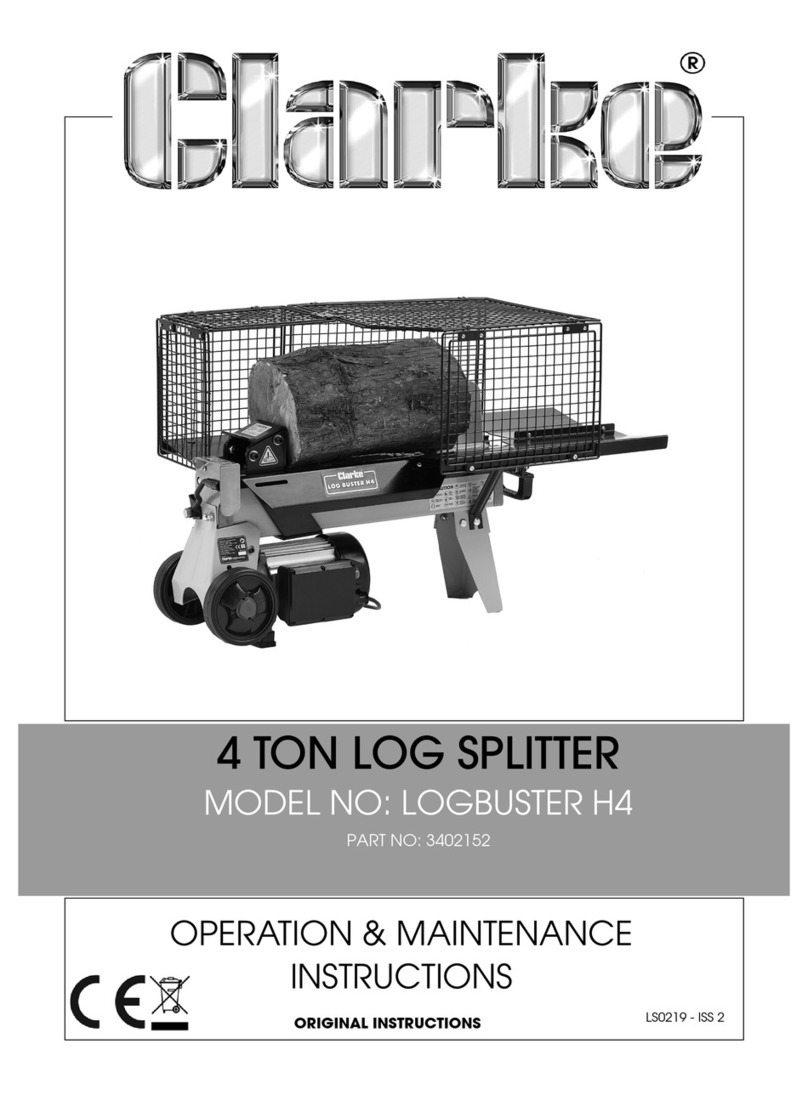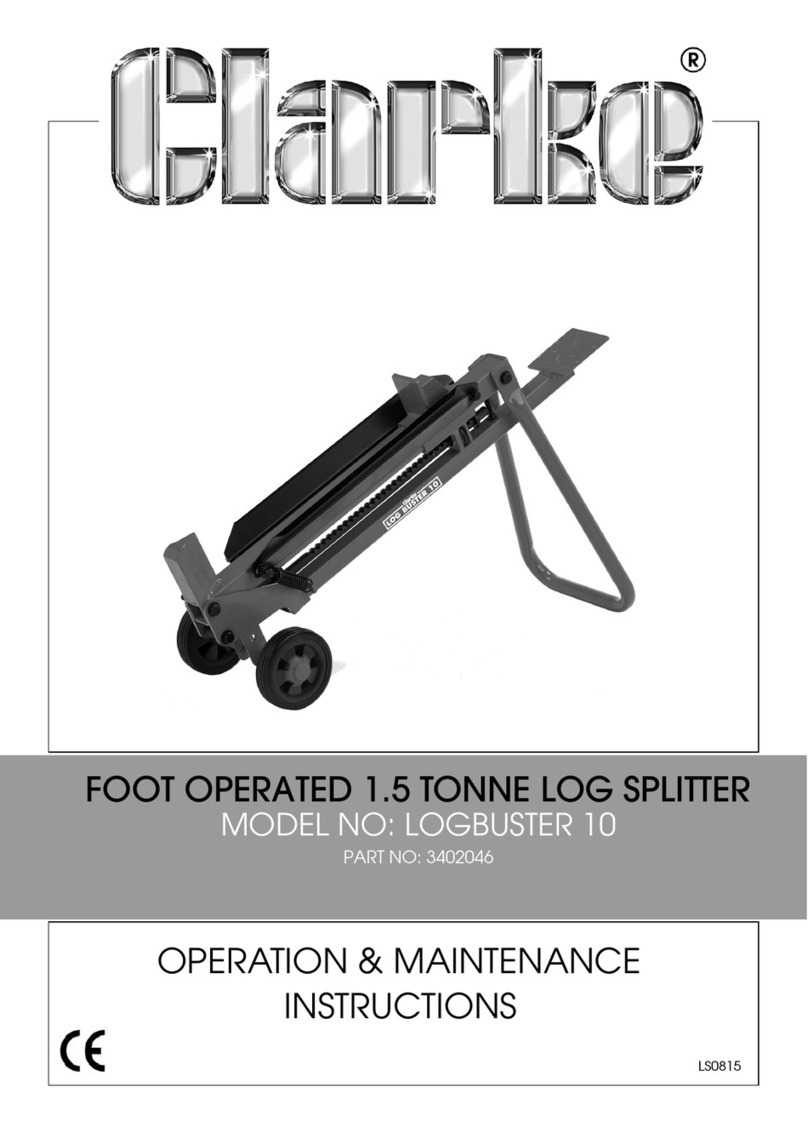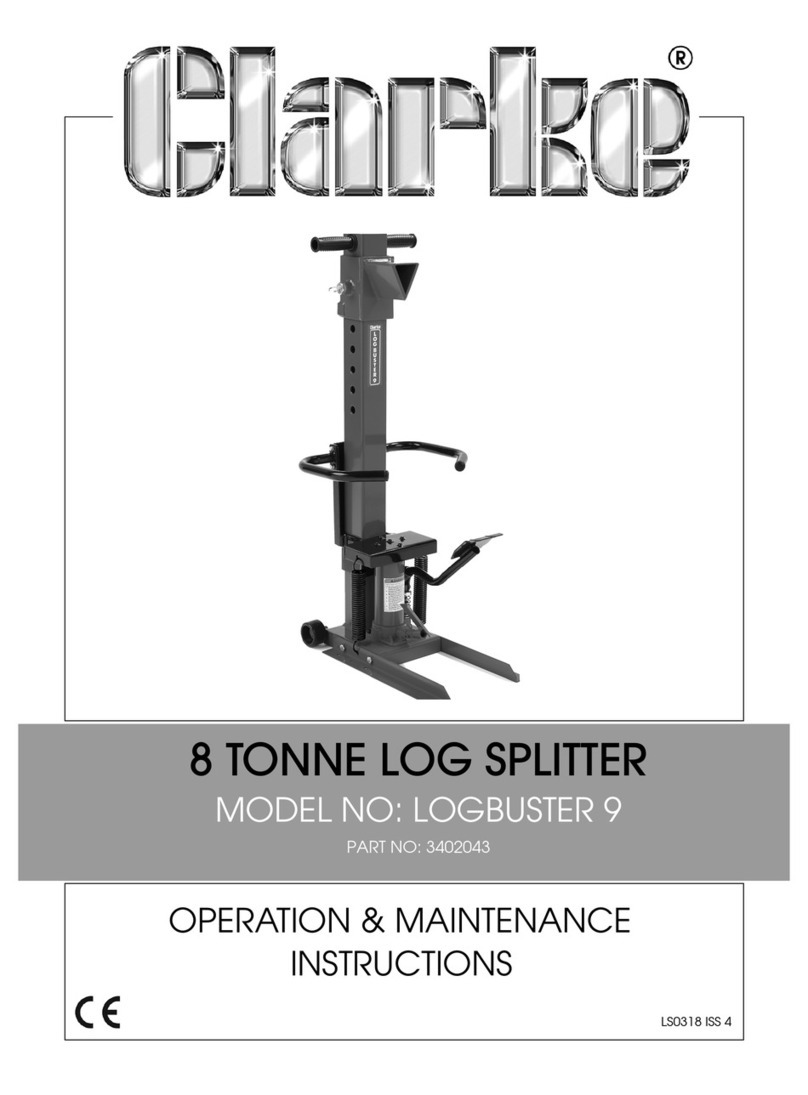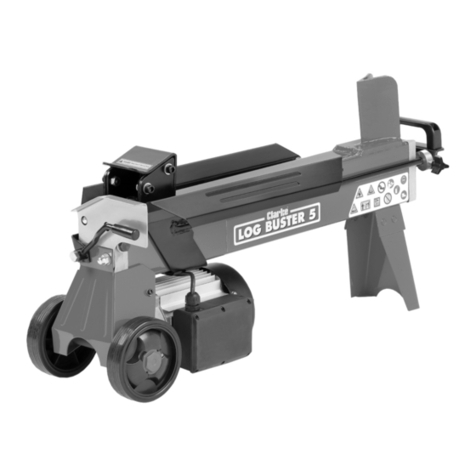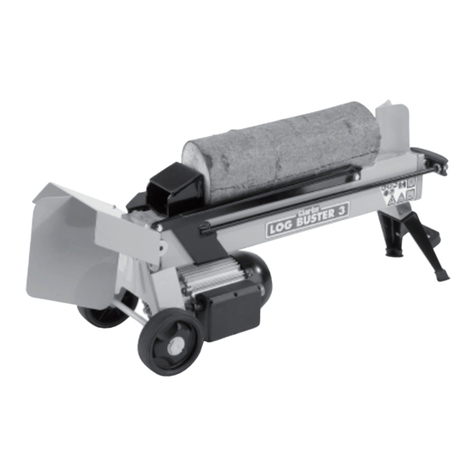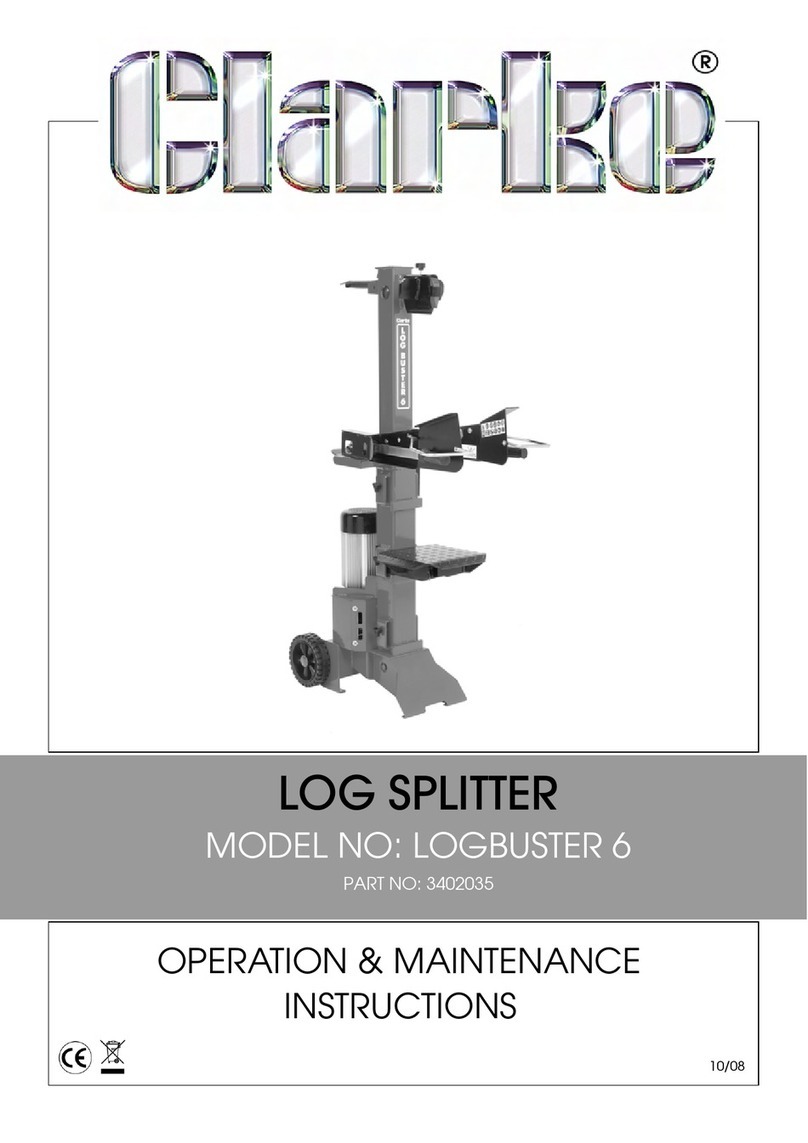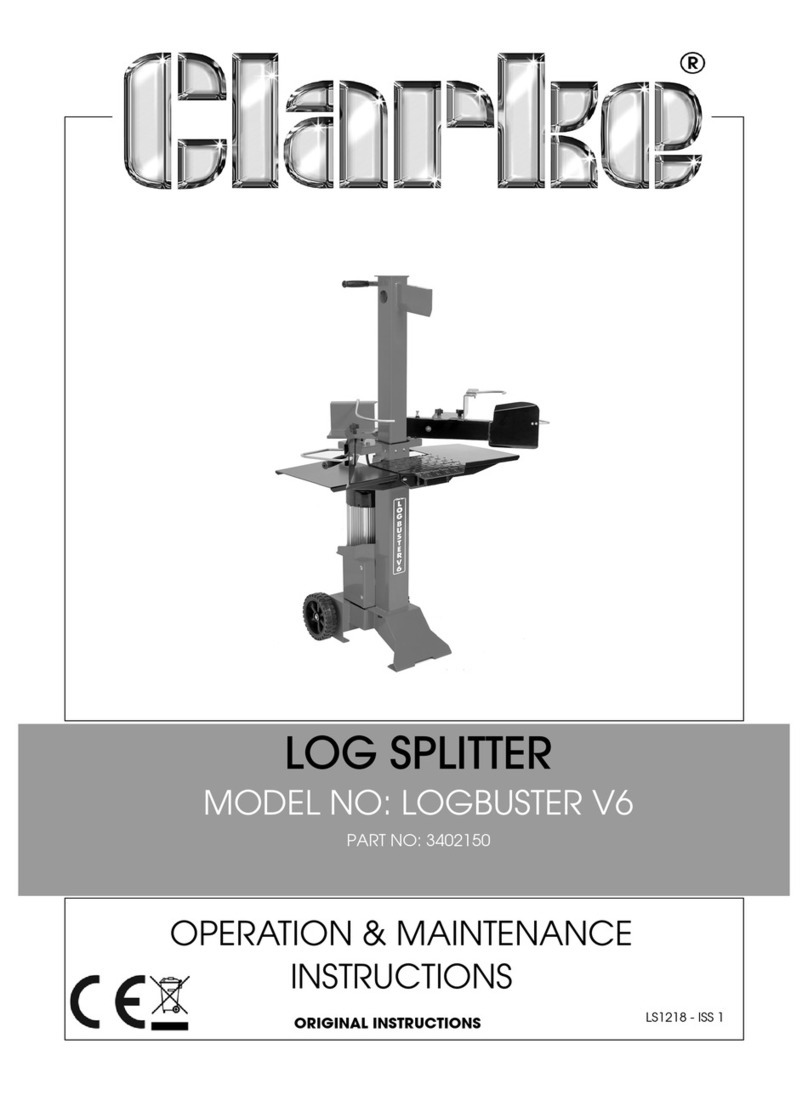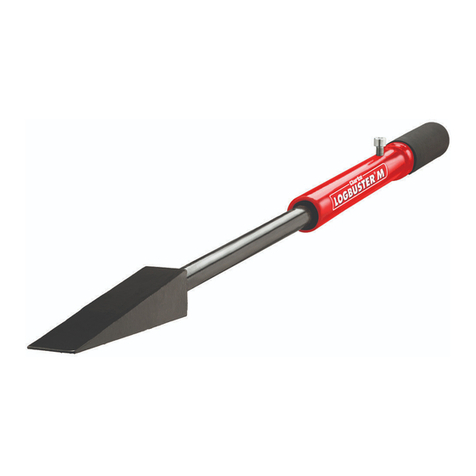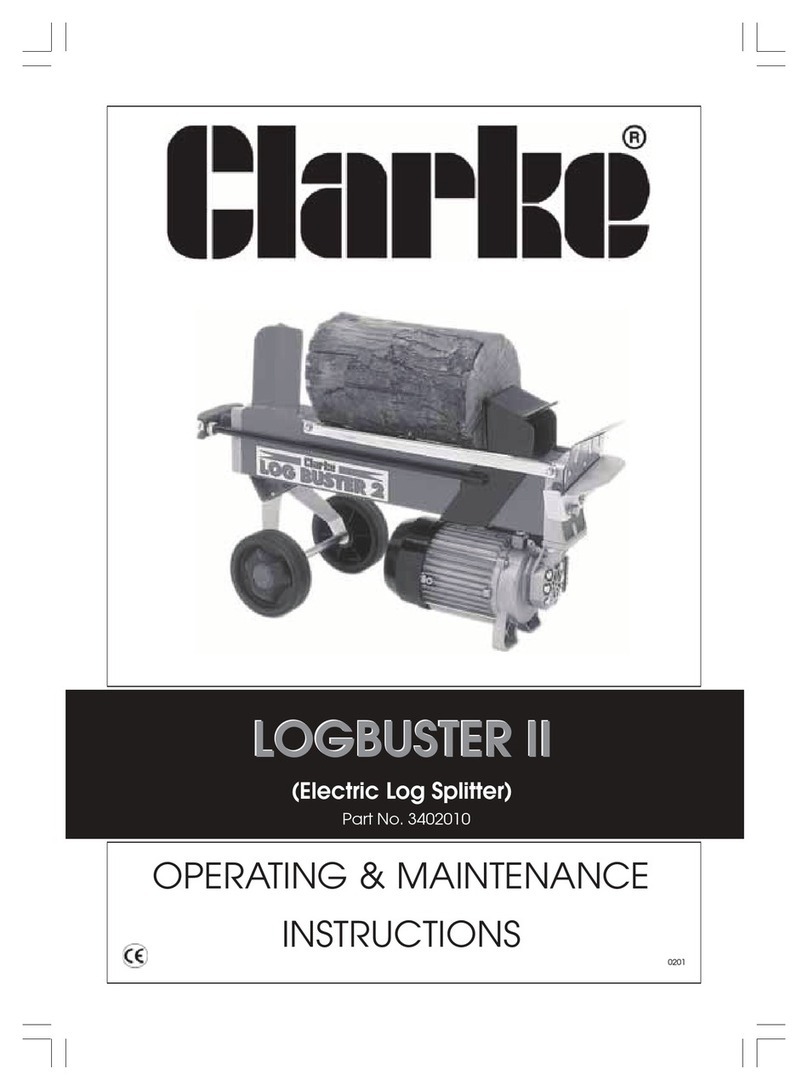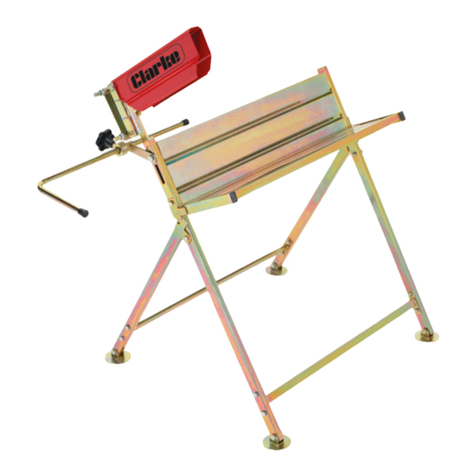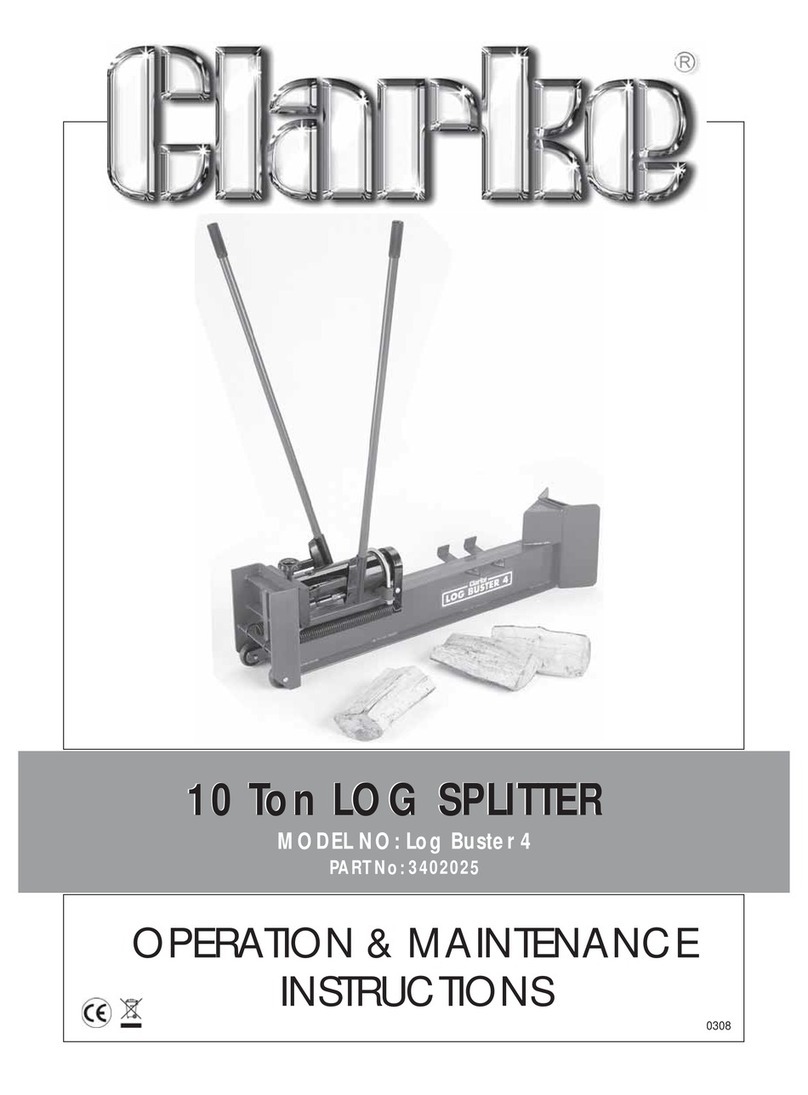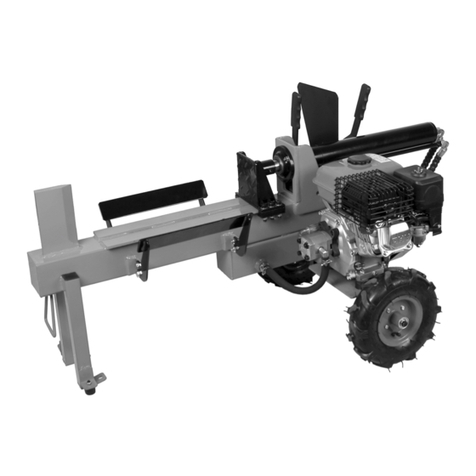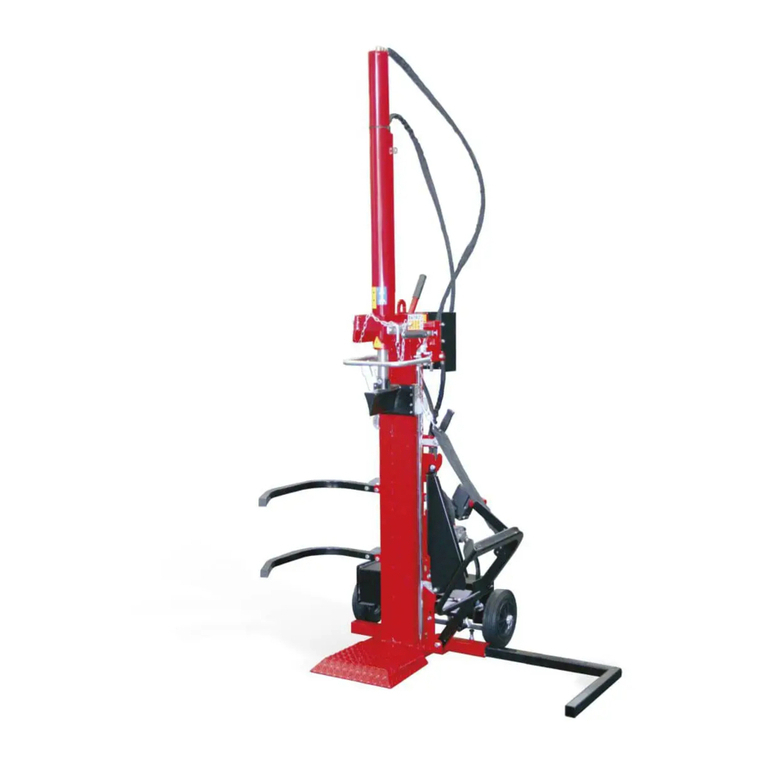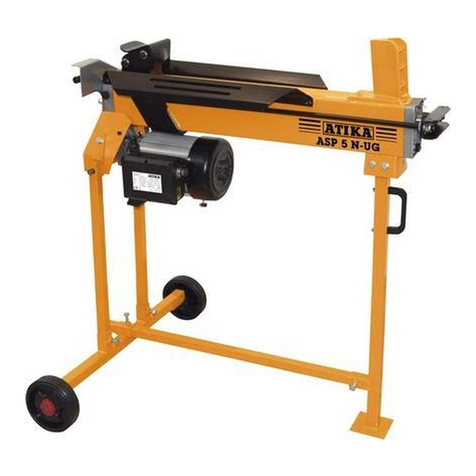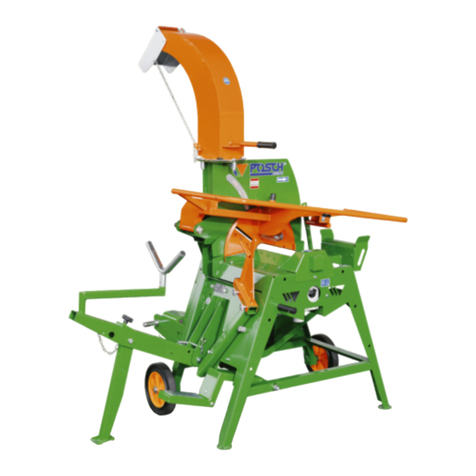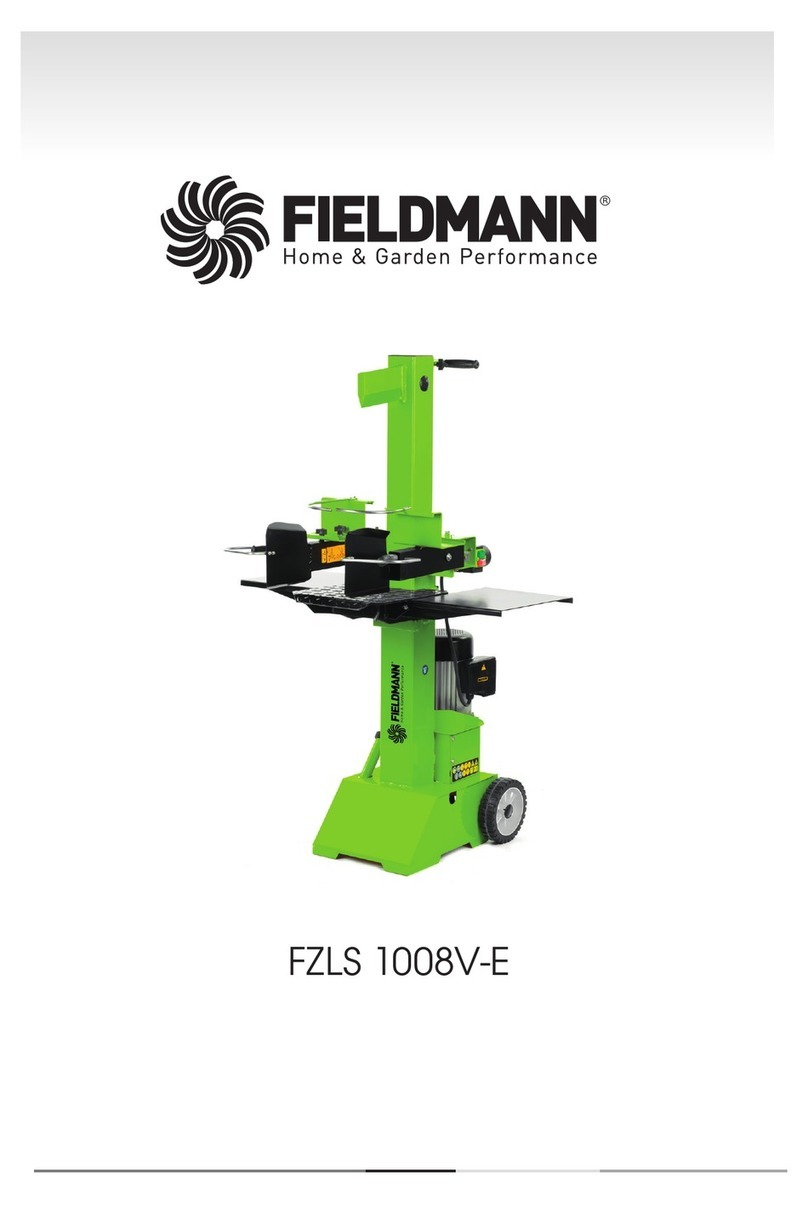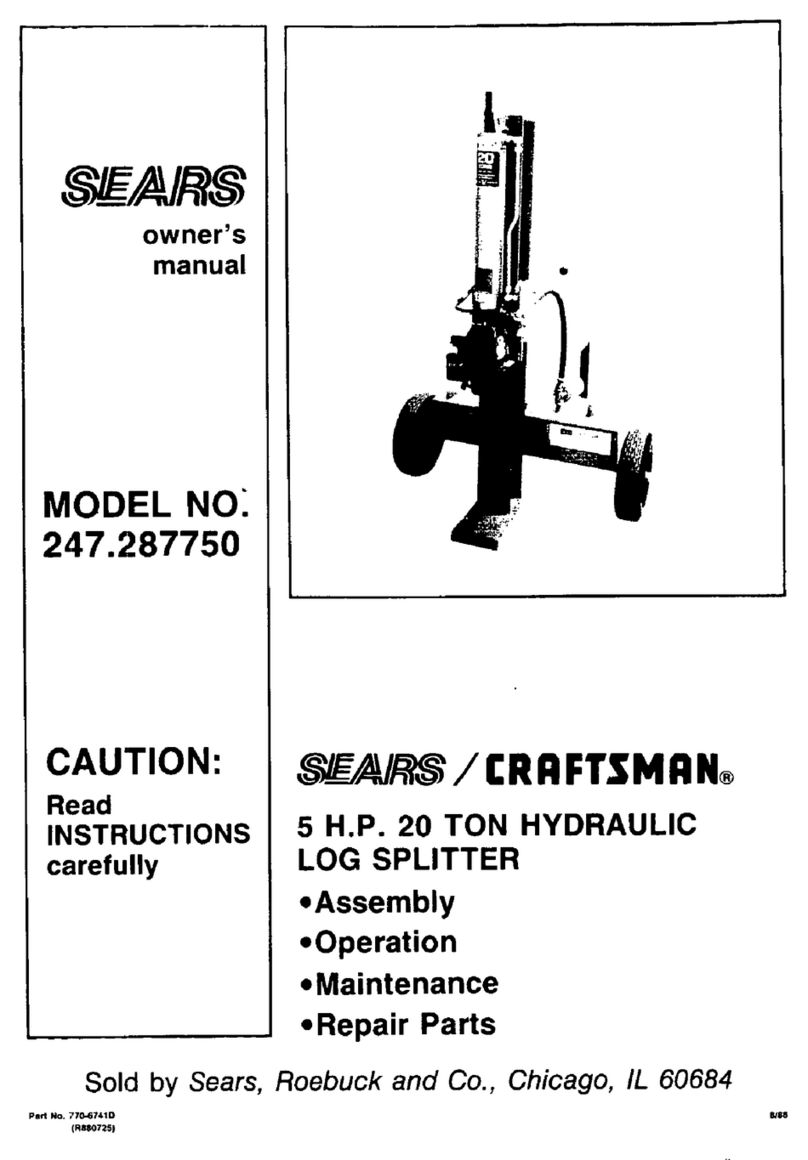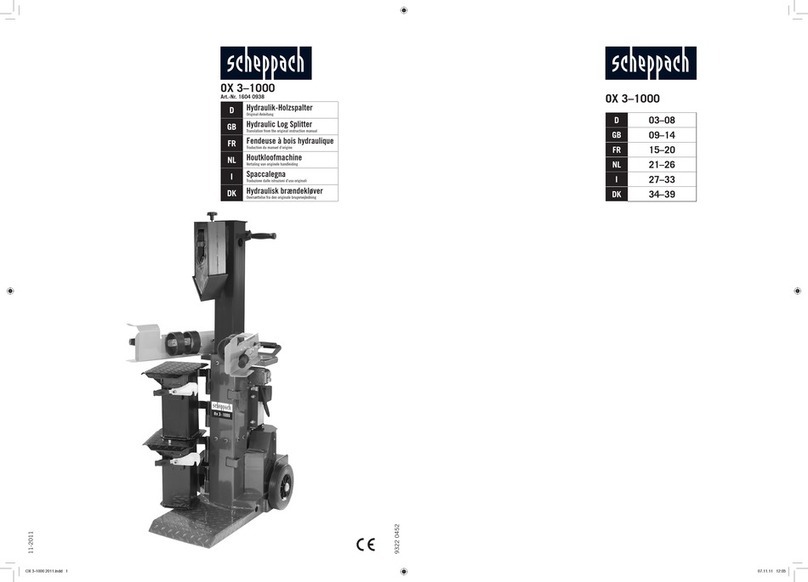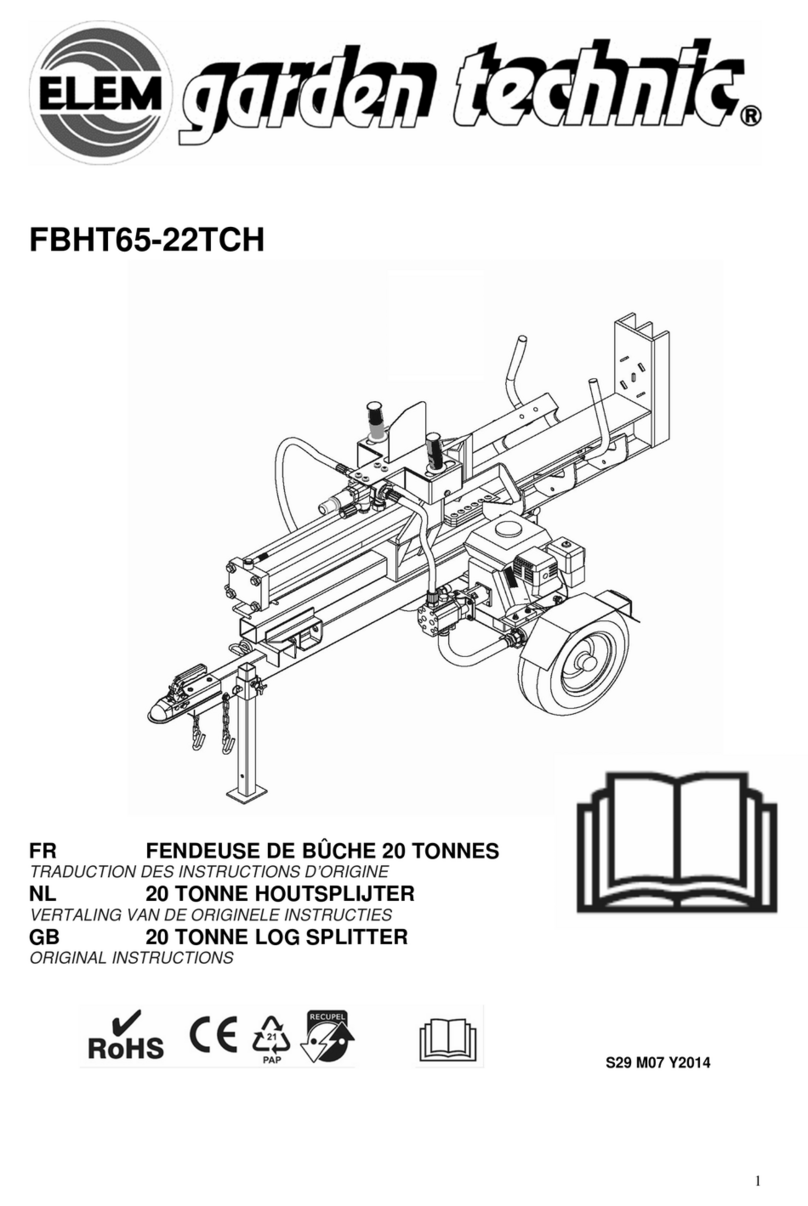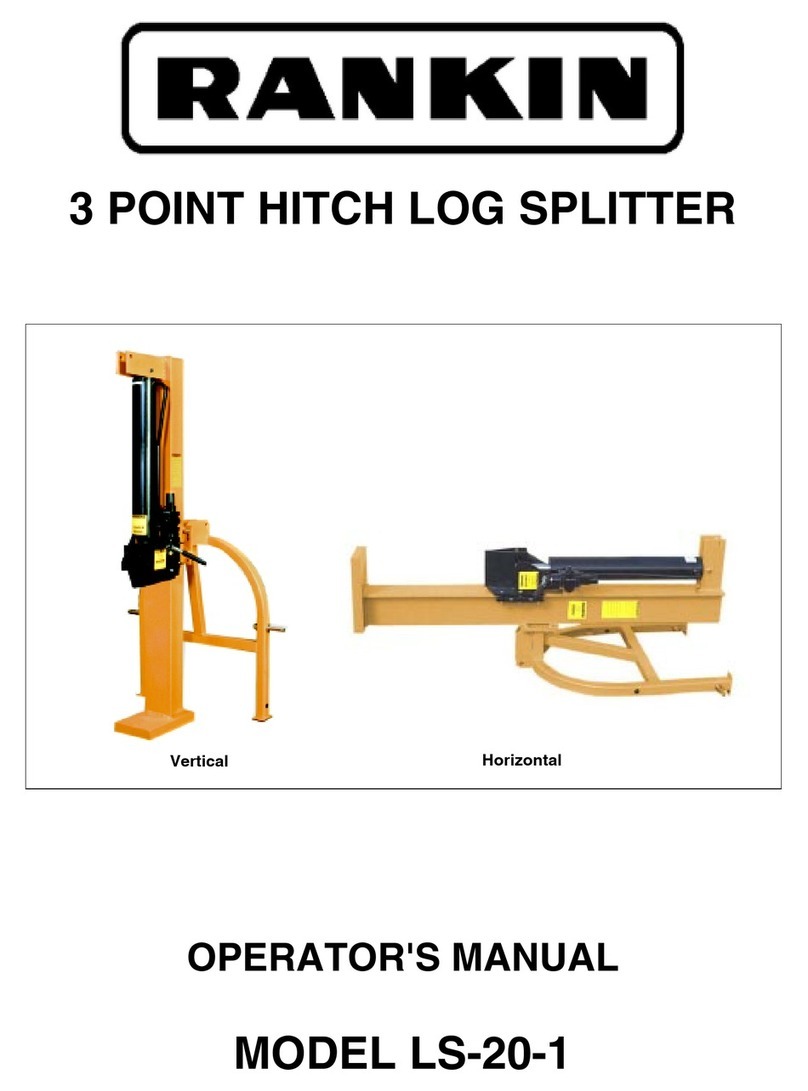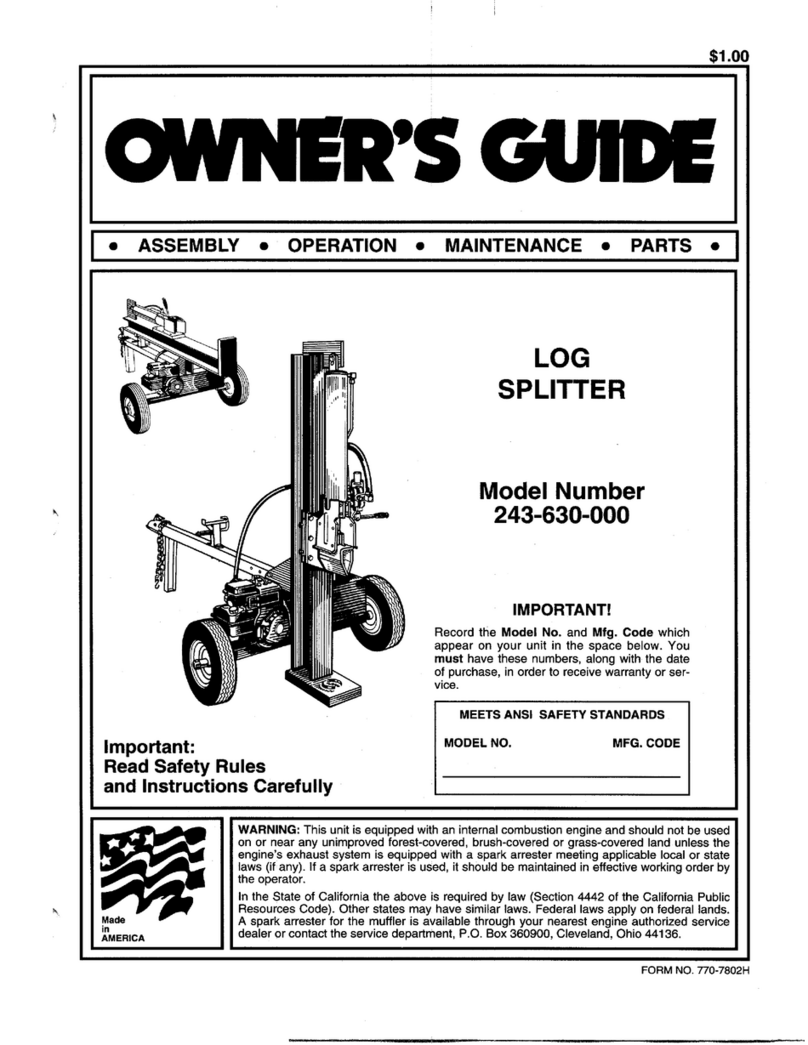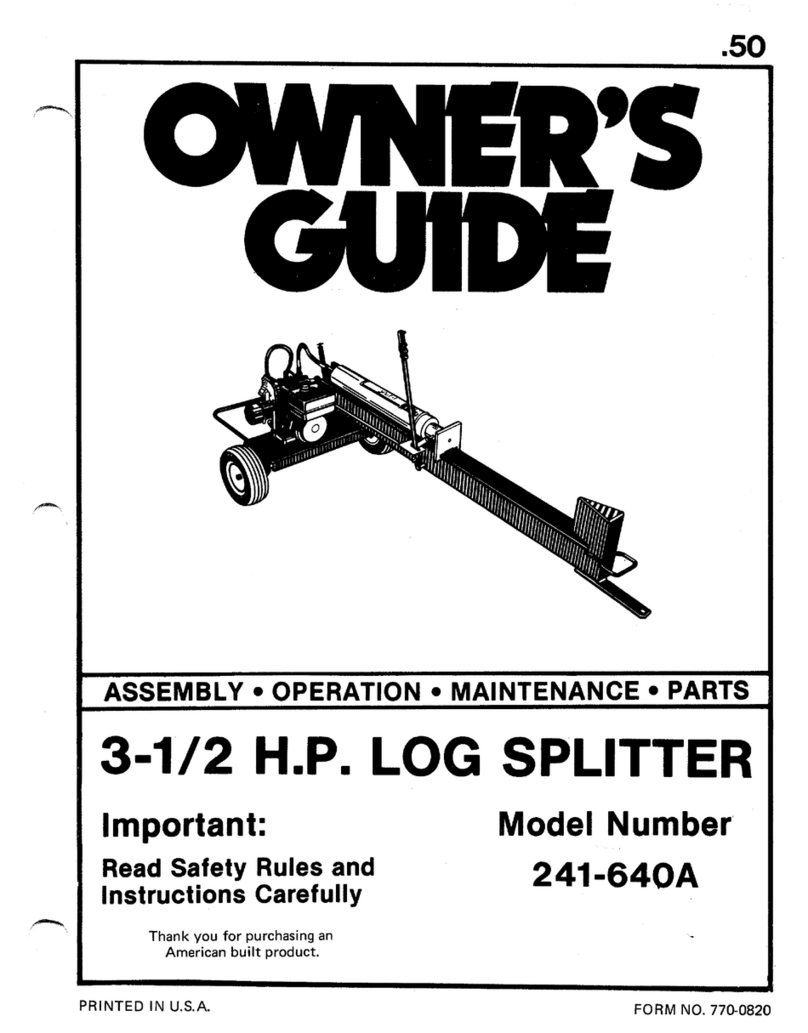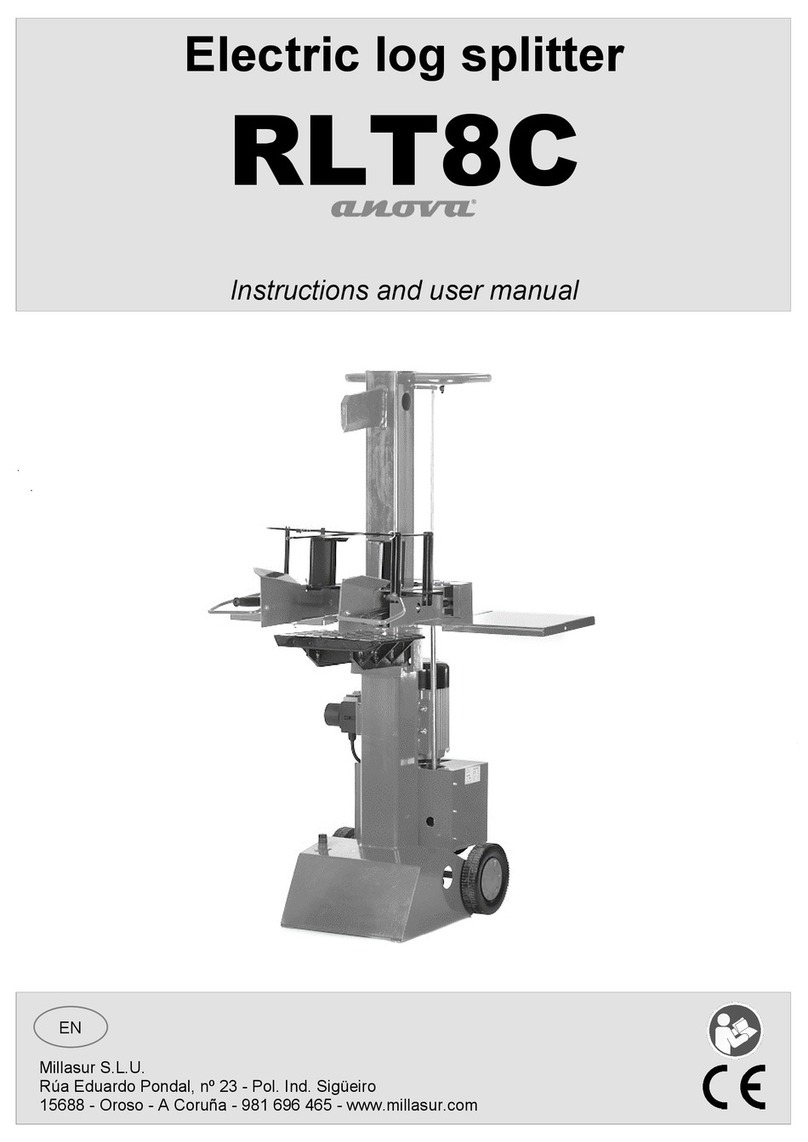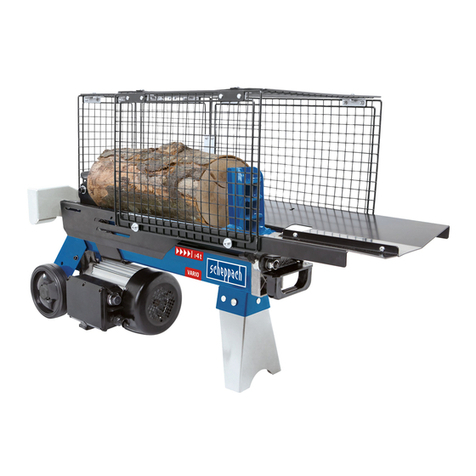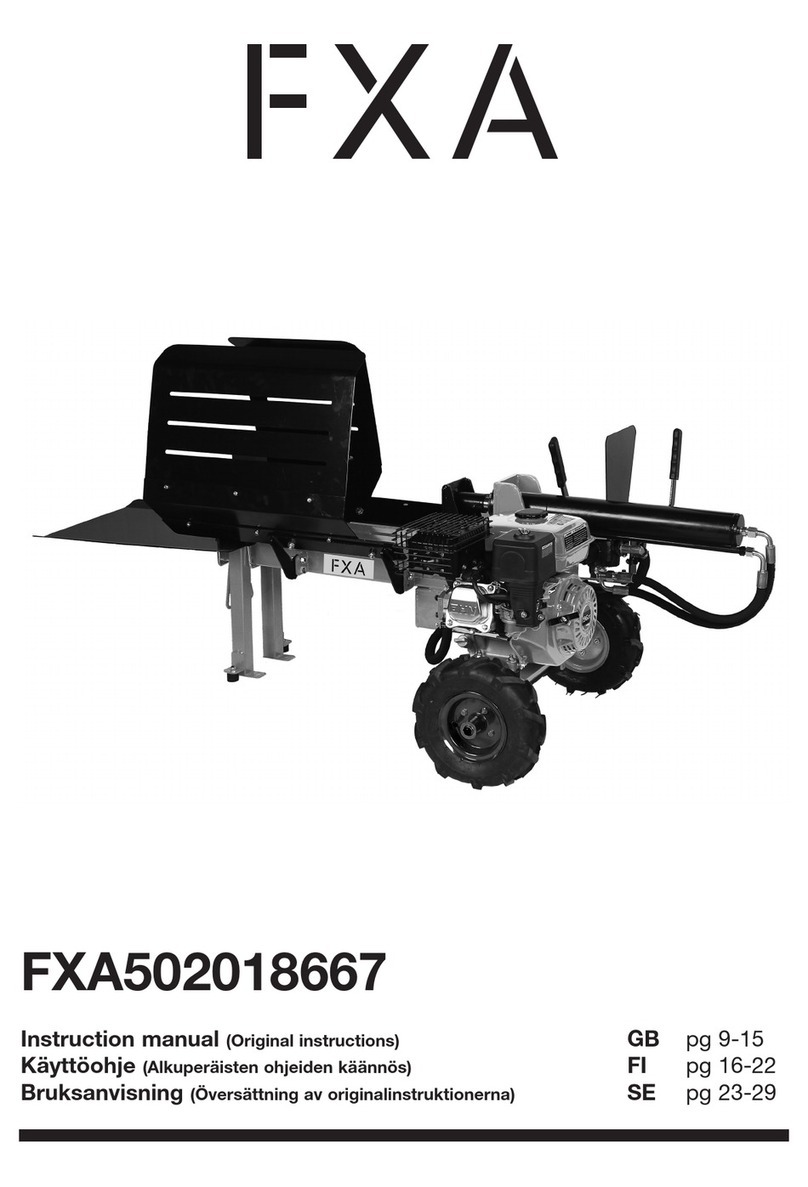
5
3. Maintain the log splitter. Check for misalignment or binding of moving
parts, breakage of parts and any other condition that may affect the log
splitters operation. If damaged, have the log splitter repaired before use.
4. Keep cutting tools sharp and clean. Properly maintained cutting tools with
sharp cutting edges are less likely to bind and are easier to control.
SERVICING
1. Have your log splitter serviced by a qualified repair person using only
identical replacement parts. This will ensure that the safety of the log
splitter is maintained.
LOG SPLITTER SPECIFIC WARNINGS
• The splitting operation of the machine is designed to be activated by
one person. While there is the possibility that additional operators could
be working with the machine (e.g. for loading and unloading), only one
operator should perform splitting operations.
UNDERSTAND YOUR LOG SPLITTER
• Read and understand the owner's manual and labels affixed to the log
splitter. Learn its limitations as well as the specific potential hazards.
AVOID DANGEROUS WORKING CONDITIONS
•ALWAYS operate your log splitter on dry, solid, level ground. Never
operate your log splitter on slippery, wet, muddy, or icy surfaces. The
location you choose should be free from any tall grass, brush, or other
interferences.
• There should be plenty of room for handling.
• Keep your work area clean and well lit. Cluttered areas invite injuries. To
avoid tripping, DO NOT leave tools, logs, or other components laying
around the work area.
•DO NOT use the log splitter in wet or damp areas or expose it to rain.
•DO NOT use it in areas where fumes from paint, solvents or flammable
liquids pose a potential hazard.
INSPECT YOUR LOG SPLITTER
• Check your log splitter before starting. Keep guards in place and in
working order.
• Replace damaged, missing or failed parts before using it.
• Make sure all nuts, bolts, screws, hydraulic fittings etc. are securely
tightened.
